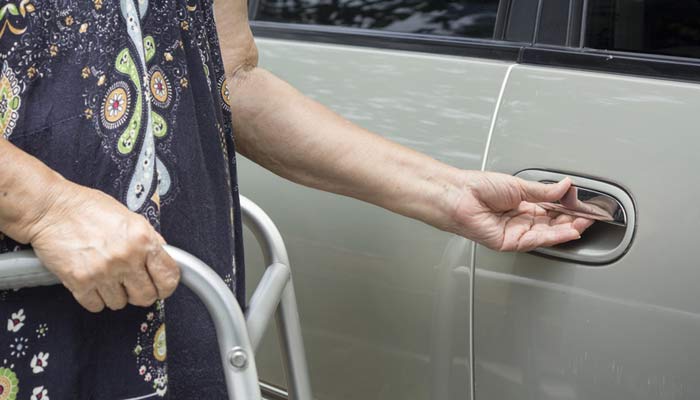
Providing transportation involves a lot more than having a car and time available. Getting your relative safely in and out of a vehicle can be a special challenge—for your loved one, but also for you. Back problems are the most common caregiving injury!
Here are some tips:
- Don’t rush. Give yourselves 15 minutes extra, in addition to driving time, to get somewhere. You’ll all end up in a better mood!
- Wear comfortable, nonslip shoes. Both of you!
- Help respectfully. Let your loved one do as much as possible, then ask, “Mom, how about I lift your leg to help you swing into the car?”
- Use helpful car features. Adjust the seats to maximize legroom when getting in and out.
- Park selectively. A flat parking lot is preferable to street parking. When you must park curbside, leave extra room beside the curb. Avoid slopes, drain covers, or other uneven surfaces.
- Sit selectively. Rather than sitting on the passenger side, people who have weakness or pain may have an easier time getting into the seat behind the driver. Experiment.
For extra help, seek out these proven aids:
- Swivel cushion. This device sits atop the car seat and swivels at its base, like a Lazy Susan with padding. It helps one pivot into the car. In a pinch, a plastic grocery bag on the seat can serve a similar function.
- Additional door handle. You can purchase a special handle that fastens to the door frame and provides an extra place to grab for support.
Seat belt extension. Seat belts are often hard for an elder to pull down because they require reaching and twisting. An extension that hangs down to shoulder level facilitates grabbing and pulling the belt across the body.

